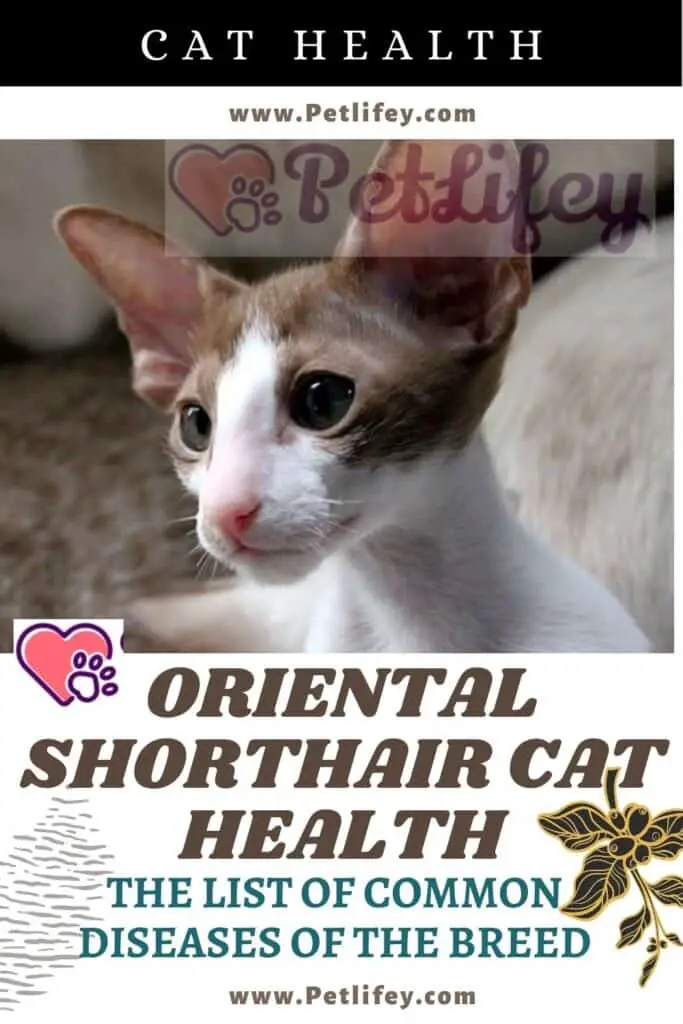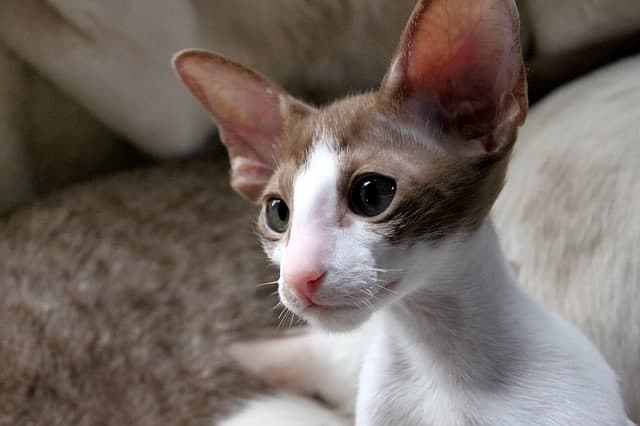Knowing everything about the health of our furry cat helps us to protect it: here are the common diseases in the Oriental Shorthair.

Knowing and promptly identifying the pathologies that can most frequently affect our four-legged friend is essential to ensure that the cat can get back on its feet as soon as possible. Let’s find out together what are the common diseases in the Eastern Shorthair, to know how to prevent, recognize and fight them.
Common Diseases in the Eastern Shorthair: The Complete List

In general, cats of this breed are in good health and have a strong constitution.
Suffice it to think, in fact, that the average life span of these specimens is between 10 and 20 years.
However, there are a number of genetic diseases that can be inherited from one generation to another.
For this reason, when buying the cat it is good to make sure you turn to a serious and reliable breeding, which certifies the absence of hereditary pathological risks for the selected cats. Common diseases in the Eastern Shorthair include:
- Progressive retinal atrophy;
- Renal amyloidosis.
In addition to genetic pathologies, specimens of this breed can develop disorders such as allergies, dermatitis, oral cavity problems.
Progressive retinal atrophy
The progressive retinal atrophy opens the list of common diseases in the Eastern Shorthair.
It is an ocular pathology that causes the cat to gradually lose sight, until it reaches a complete state of blindness.
Among the most common symptoms with which this disorder are:
- Hypersensitivity to light
- Abnormalities of the retina
- Dilation of the pupils
- Loss of vision in the peripheral or central portion
- Obesity
Progressive retinal atrophy is a difficult condition to spot. In fact, ocular degeneration occurs starting from the first 3 months of the cat’s life.
Its consequences, however, begin to manifest around the age of 5. Unfortunately, today this pathology is incurable.
The only possible methods of intervention consist in setting up a comfortable environment, in which the cat can feel safe and at ease even in its new condition.
For this, prevention is fundamental: in fact, it is necessary that the subjects affected by the disease are removed from reproduction.
Renal amyloidosis
Finally, renal amyloidosis closes the list of common diseases in the Eastern Shorthair.
This term indicates an accumulation of proteins in the kidneys of the cat, which his body is unable to excrete properly.
Among the main symptoms of the disease are:
- Weight loss
- Weakness
- Lethargy
- hypertension
- Edema
- Ascites
- Proteinuria
The main consequence of amyloidosis is the onset of renal failure in cats.
For this reason, the treatment of the disease involves a change of diet , as well as methods of intervention that depend on the stage of the disease and the health conditions of the animal.
In general, the most effective treatments are chemotherapy, bone marrow transplant and treatments based on autologous stem cells.






